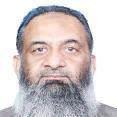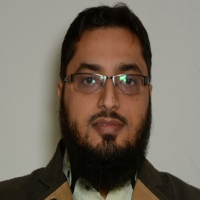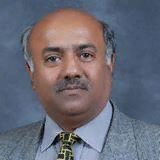International Journal of Wireless and Microwave Technologies (IJWMT)
IJWMT Vol. 12, No. 5, 8 Oct. 2022
Cover page and Table of Contents: PDF (size: 810KB)
Trust Modelling and Management for IoT Healthcare
Full Text (PDF, 810KB), PP.21-35
Views: 0 Downloads: 0
Author(s)
Index Terms
IoT healthcare, Trust management, Smart healthcare.
Abstract
The IoT wave is on rise and it is considered as the biggest world changing computing ecosystem after the invention of Internet where the meaning of lifestyle is expected to be changed. IoT is now diffusing pervasively in most areas of life like smart home, smart cities, smart irrigation, smart healthcare etc. The concerned industry is trying to reap maximum benefits from this regime without putting extra efforts or investing much to make the related infrastructure secure and trustworthy. IoT end device, a.k.a smart object, is one component of this ecosystem, responsible to interact with the physical environment and gather the data, along with communication technologies, processing capabilities like fog or cloud computing and applications to interact with the device (s). It is possibility that such devices can be faulty, compromised or misbehaving because of internal or external factors like hardware malfunctioning or cyber-attacks. In this situation the data gathered and transferred by such devices can be disaster and challenging in decision making specifically in an area where the human life is involved like IoT healthcare. We have proposed a mathematical model to estimate the trust of such devices. Trust on IoT devices and gathered data from such trusted devices will boost the confidence of end users on this new computing regime; especially in healthcare environment. The estimated trust status (trusted, uncertain, and untrustworthy) will be saved in a database or CSV file with a timestamp to be used as reputation by healthcare applications. Patients are assigned their SOI based on their specific diagnoses and procedures performed during their medical encounter. Similarly, for a patient with heart diseases or having hypertension can be considered in extreme category with a value of γ = 1 if there is some deviation of readings.
Cite This Paper
Abdul Rauf, Riaz Ahmed Shaikh, Asadullah Shah, " Trust Modelling and Management for IoT Healthcare", International Journal of Wireless and Microwave Technologies(IJWMT), Vol.12, No.5, pp. 21-35, 2022. DOI:10.5815/ijwmt.2022.05.03
Reference
[1]Minerva, R., Biru, A., & Rotondi, D. (2015). Towards a definition of the Internet of Things (IoT). IEEE Internet Initiative, 1(1), 1-86.
[2]Atzori, L., Iera, A., & Morabito, G. (2010). The internet of things: A survey. Computer networks, 54(15), 2787-2805.
[3]Li, J., Huang, Z., & Wang, X. (2011, May). Notice of Retraction: Countermeasure research about developing Internet of Things economy: A case of Hangzhou city. In 2011 International Conference on E-Business and E-Government (ICEE) (pp. 1-5). IEEE.
[4]Pang, Z. (2013). Technologies and Architectures of the Internet-of-Things (IoT) for Health and Well-being (Doctoral dissertation, KTH Royal Institute of Technology).
[5]Islam, S. R., Kwak, D., Kabir, M. H., Hossain, M., & Kwak, K. S. (2015). The internet of things for health care: a comprehensive survey. IEEE access, 3, 678-708.
[6]Das, M. L. (2015, February). Privacy and security challenges in internet of things. In International Conference on Distributed Computing and Internet Technology (pp. 33-48). Springer, Cham.
[7]Radcliffe, J. (2011, August). Hacking medical devices for fun and insulin: Breaking the human SCADA system. In Black Hat Conference presentation slides (Vol. 2011).
[8]Rauf, A., Shaikh, R. A., & Shah, A. (2018, February). Security and privacy for IoT and fog computing paradigm. In 2018 15th Learning and Technology Conference (L&T) (pp. 96-101). IEEE.
[9]Gambetta, D. (2000). Can we trust trust. Trust: Making and breaking cooperative relations, 13, 213-237.
[10]McKnight, D. H., & Chervany, N. L. (1996). The meanings of trust.
[11]Yan, Z., Zhang, P., & Vasilakos, A. V. (2014). A survey on trust management for Internet of Things. Journal of network and computer applications, 42, 120-134.
[12]Gu, L., Wang, J., & Sun, B. (2014). Trust management mechanism for Internet of Things. China Communications, 11(2), 148-156.
[13]Arabsorkhi, A., Haghighi, M. S., & Ghorbanloo, R. (2016, September). A conceptual trust model for the Internet of Things interactions. In 2016 8th International Symposium on Telecommunications (IST) (pp. 89-93). IEEE.
[14]Atzori, L., Iera, A., & Morabito, G. (2011). Siot: Giving a social structure to the internet of things. IEEE communications letters, 15(11), 1193-1195.
[15]Nitti, M., Girau, R., Atzori, L., Iera, A., & Morabito, G. (2012, September). A subjective model for trustworthiness evaluation in the social internet of things. In 2012 IEEE 23rd international symposium on personal, indoor and mobile radio communications-(PIMRC) (pp. 18-23). IEEE.
[16]Bao, F., & Chen, I. R. (2012, September). Dynamic trust management for internet of things applications. In Proceedings of the 2012 international workshop on Self-aware internet of things (pp. 1-6).
[17]Bao, F., & Chen, R. (2012, June). Trust management for the internet of things and its application to service composition. In 2012 IEEE international symposium on a world of wireless, mobile and multimedia networks (WoWMoM) (pp. 1-6). IEEE.
[18]Køien, G. M. (2011). Reflections on trust in devices: an informal survey of human trust in an internet-of-things context. Wireless personal communications, 61(3), 495-510.
[19]Xu, X., Bessis, N., & Cao, J. (2013). An autonomic agent trust model for IoT systems. Procedia Computer Science, 21, 107-113.
[20]Gligor, V., & Wing, J. M. (2011, March). Towards a theory of trust in networks of humans and computers. In International workshop on Security Protocols (pp. 223-242). Springer, Berlin, Heidelberg.
[21]Chen, D., Chang, G., Sun, D., Li, J., Jia, J., & Wang, X. (2011). TRM-IoT: A trust management model based on fuzzy reputation for internet of things. Computer Science and Information Systems, 8(4), 1207-1228.
[22]Leister, W., & Schulz, T. (2012, May). Ideas for a Trust Indicator in the Internet of Things. In The First International Conference on Smart Systems, Devices and Technologies. Oslo: SMART Press.
[23]Al-Hamadi, H., & Chen, R. (2016, October). Trust-based decision making for environmental health community of interest IOT systems. In 2016 IEEE 12th International Conference on Wireless and Mobile Computing, Networking and Communications (WiMob) (pp. 1-6). IEEE.
[24]Horn, S. D., Horn, R. A., & Sharkey, P. D. (1984). The Severity of Illness Index as a severity adjustment to diagnosis-related groups. Health Care Financing Review, 1984(Suppl), 33.
[25]https://www.investopedia.com/ask/answers/difference-between-simple-exponential-moving-average, 05/05/2019 [Online]
[26]https://www.schwab.com/active-trader/insights/content/trend-your-friend-using-moving-averages, 07/05/2019 [Online]
[27]Rehiman, KA Rafidha, and S. Veni. "A trust management model for sensor enabled mobile devices in IoT." In 2017 International Conference on I-SMAC (IoT in Social, Mobile, Analytics and Cloud)(I-SMAC), pp. 807-810. IEEE, 2017.
[28]Wang, Bo, Mingchu Li, Xing Jin, and Cheng Guo. "A reliable IoT edge computing trust management mechanism for smart cities." IEEE Access 8 (2020): 46373-46399.
[29]Radwan, Neyara, and Maged Farouk. "The Growth of Internet of Things (IoT) In The Management of Healthcare Issues and Healthcare Policy Development." International Journal of Technology, Innovation and Management (IJTIM) 1, no. 1 (2021): 69-84.


